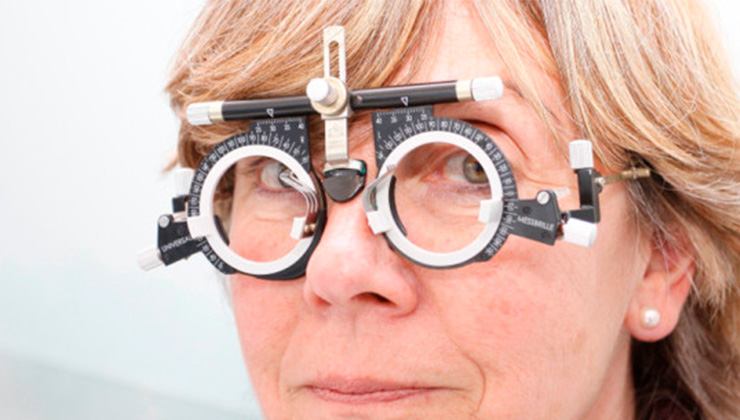What are refractive errors?
Refractive errors are a type of vision problem that makes it hard to see clearly. They happen when the shape of your eye keeps light from focusing correctly on your retina (a light-sensitive layer of tissue in the back of your eye).
Refractive errors are the most common type of vision problem. More than 150 million Americans have a refractive error — but many don’t know that they could be seeing better. That’s why eye exams are so important.
If you have a refractive error, your eye doctor can prescribe eyeglasses or contact lenses to help you see clearly.


What are the types of refractive errors?
There are 4 common types of refractive errors:
- Nearsightedness (myopia) makes far-away objects look blurry
- Farsightedness (hyperopia) makes nearby objects look blurry
- Astigmatism can make far-away and nearby objects look blurry or distorted
- Presbyopia makes it hard for middle-aged and older adults to see things up close
Learn more about the common types of refractive errors
What are the symptoms of refractive errors?
The most common symptom is blurry vision. Other symptoms include:
- Double vision
- Hazy vision
- Seeing a glare or halo around bright lights
- Squinting
- Headaches
- Eye strain (when your eyes feel tired or sore)
- Trouble focusing when reading or looking at a computer
Some people may not notice the symptoms of refractive errors. It’s important to get eye exams regularly — so your eye doctor can make sure you’re seeing as clearly as possible.
If you wear glasses or contact lenses and still have these symptoms, you might need a new prescription. Talk to your eye doctor and get an eye exam if you are having trouble with your vision.

Am I at risk for refractive errors?
Anyone can have refractive errors, but you’re at higher risk if you have family members who wear glasses or contact lenses.
Most types of refractive errors, like nearsightedness, usually start in childhood. Presbyopia is common in adults ages 45 and older.
Talk with your doctor about your risk for refractive errors, and ask how often you need to get checked.
What causes refractive errors?
Refractive errors can be caused by:
- Eyeball length (when the eyeball grows too long or too short)
- Problems with the shape of the cornea (the clear outer layer of the eye)
- Aging of the lens (an inner part of the eye that is normally clear and helps the eye focus)

How will my eye doctor check for refractive errors?
Eye doctors can check for refractive errors as part of a comprehensive eye exam. The exam is simple and painless. Your doctor will ask you to read letters that are up close and far away. Then, they may give you some eye drops to dilate (widen) your pupil and check for other eye problems.
What’s the treatment for refractive errors?
Eye doctors can correct refractive errors with glasses or contact lenses, or fix the refractive error with surgery.
Talk over your options with your eye doctor. Remember these tips:
• See your doctor for eye exams regularly
• Tell your doctor if your vision gets worse or if you are having problems with your glasses or contact lenses
• Encourage family members to get checked for refractive errors, since they can run in families


